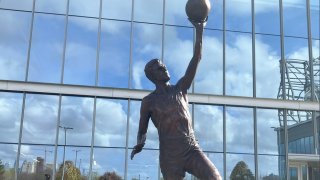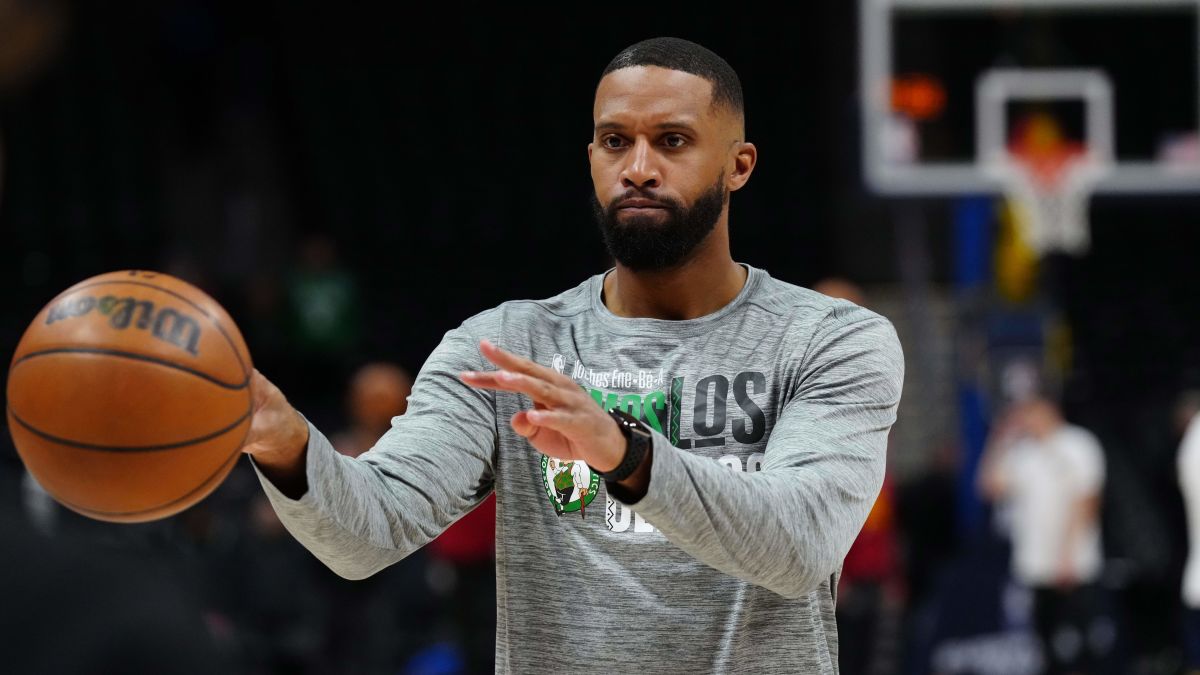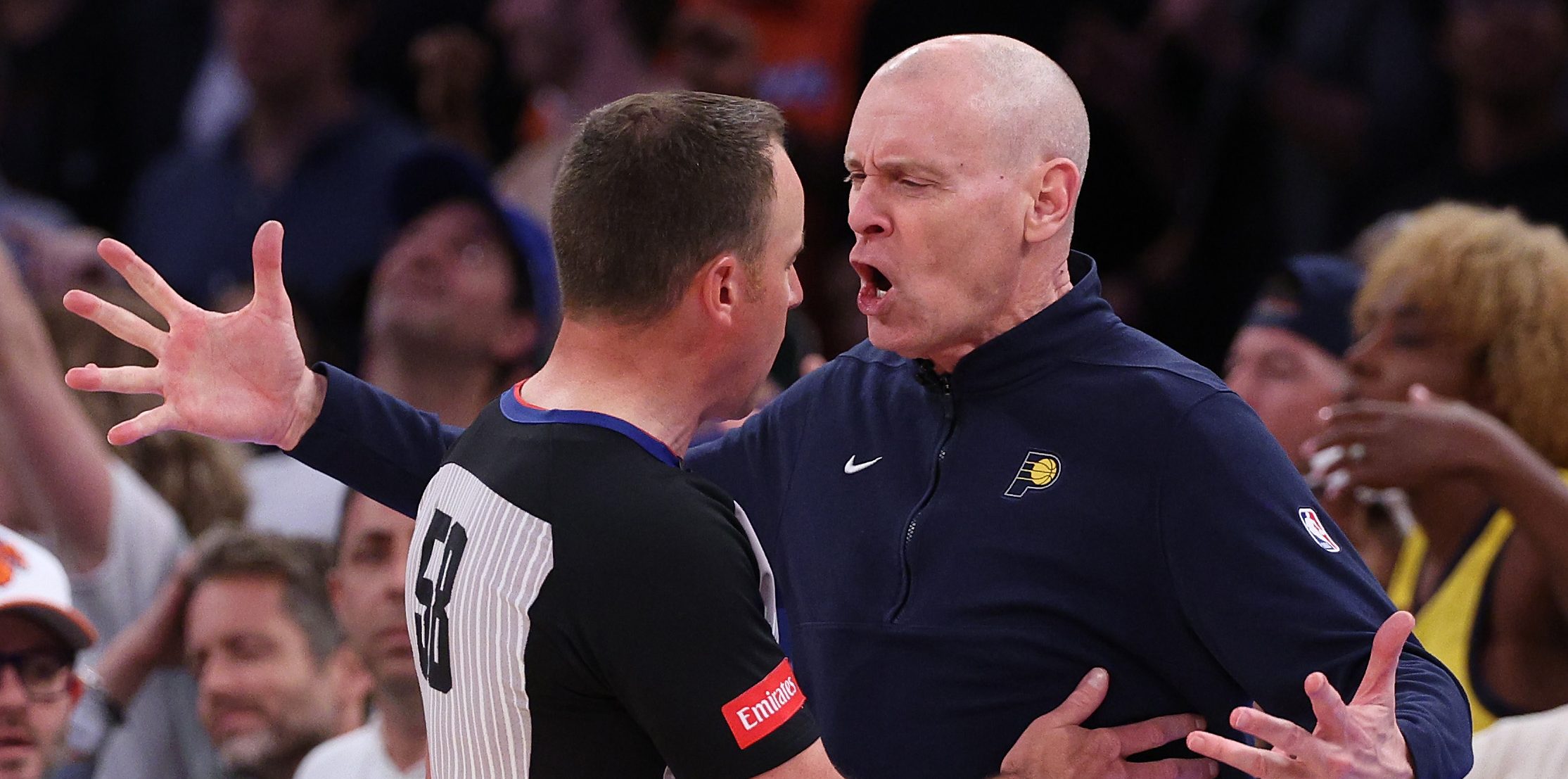
Dolph Schayes’ availability, consistency and longevity were among his standout traits as a player.
They’re qualities any coach of any era would love.
“I talked to my players about Dolph Schayes yesterday. There was a point in the game (against the Knicks) that I wished I could’ve put Dolph Schayes in the game,” Sixers head coach Doc Rivers joked on Saturday. “That would’ve helped us quite a bit.”
Stay in the game with the latest updates on your beloved Philadelphia sports teams! Sign up here for our All Access Daily newsletter.
The Sixers on Saturday unveiled a statue of Schayes on “Legends Walk” outside of their practice facility in Camden, New Jersey. Schayes, who died in 2015 at 87 years old, spent all 16 of his professional seasons with the organization. During one stretch that lasted nearly a decade, he played in 706 consecutive games.
Schayes’ son Danny, who stands a few inches taller than his 6-foot-8, Hall of Fame father, was a playing contemporary of Rivers. The Syracuse Nationals have always been an inextricable part of his identity. He was named after Danny Biasone, founding owner of the Nationals and inventor of the 24-second clock. Schayes wore No. 24 for that reason.
“Growing up, the word ‘Celtics’ was a curse word in my house. Basketball was his life in so many ways," Danny Schayes said in an interview with NBC Sports Philadelphia. “Romanian immigrant parents; basketball was his way of upward mobility. He played a long career at a time when they didn’t have long careers … and then stayed in the game.
NBA
“He coached the Sixers, coached (the Buffalo Braves), was the (NBA's) supervisor of officials. And then my career came along and he got to stay involved for the next 18 years. So for him, basketball was really the driving force of his life and something he loved all the way to the end.”
The Sixers retired Dolph Schayes’ No. 4 in 2016. He’s one of 10 players in franchise history with a retired jersey number, and now one of nine with a likeness on Legends Walk created by sculptor Chad Fisher.
Sixers executive advisor and Philadelphia basketball icon Sonny Hill compared Schayes’ game to LeBron James’.
“He was exceptional,” Hill said. “He was ahead of his time. He was better than advertised, because there was no player at his size, his height and his mobility at that particular time.”
Schayes himself saw similarities with Dirk Nowitzki and Tim Duncan. A member of the NBA’s 75th anniversary team named last year, Schayes was known for having deep range on his two-handed set shot. He led the league in free throw percentage three times and averaged 12.1 rebounds in his career. As Hill highlighted, Schayes developed a strong left hand when he played through a broken right wrist.
Hill recalled that Schayes “provided comfort” and support to Earl Lloyd, who was the first Black player to appear in an NBA game in 1950. Lloyd played for the Nationals from 1952 through ’58 and became a good friend of Schayes’. He and rookie forward Jim Tucker were the first Black players to win an NBA title with the 1954-55 Nationals.
Schayes couldn’t capture an NBA championship as a coach, though he did lead the 1965-66 Sixers to a 55-25 season and earned Coach of the Year.
In 1977, he coached his son’s team to a gold medal in the Maccabiah Games. Schayes was proud to be an all-time great Jewish athlete and took the Maccabiah competition quite seriously.
“Very intense,” Danny Schayes said. “He came from an era where intensity and drive were really the defining factors of how you played, more so than skill. He was always a tough player and expected that out of his players as a coach. … Strategy, nobody better.
“A game we should’ve been overmatched, we won at the end. It was (against) most of the Maccabi Tel Aviv team that won their first European championship that spring, and we played them that summer. It was a great game. … That specific game is one of the most memorable I’ve ever played in.”
Dolph Schayes’ stint as the Buffalo Braves’ first head coach has also stuck with Danny Schayes.
“I got to be a ball boy, 10 years old in the visitor’s locker room with Lew Alcindor, (now) Kareem Abdul-Jabbar … young ‘Pistol’ Pete Maravich,” he said. “All the great players from that era, I got to see them up close, be at the practices. So just being around the game gave me an exposure that was very unique at the time.”
For the Schayes family and for Rivers, Saturday was a good time for fond memories.
“We all take from history,” Rivers said. “I look at every player now in the NBA and you can watch something they’ve taken from someone else. Sometimes guys are creative; they create their own thing. And Dolph was a creator.”


